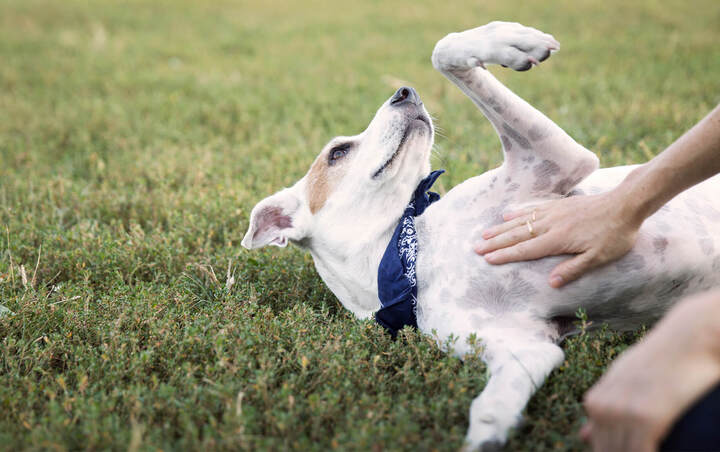Pets bring immeasurable joy and companionship to our lives. As responsible pet owners, we constantly seek ways to entertain and engage our furry friends. One popular option has been the use of laser toys, known for their ability to captivate the attention of cats and dogs alike. However, recent studies and expert opinions suggest that these seemingly harmless toys might be contributing to OCD-like behaviors in pets. In this blog post, we’ll explore this connection and what it means for our beloved animal companions.
What is OCD in Pets?
Obsessive-Compulsive Disorder (OCD) in pets is characterized by repetitive, compulsive behaviors that go beyond normal animal habits. These behaviors are often performed excessively and can interfere with normal functioning. It’s important to recognize the signs of OCD in pets, as early intervention can prevent the development of more serious issues.
Traits to Look For:
- Excessive Grooming: Pets, especially cats, may groom themselves to the point of causing skin irritation or hair loss.
- Tail Chasing: Dogs may chase their tails obsessively, often to the point of exhaustion.
- Pacing or Circling: Some pets may pace or circle compulsively, showing signs of distress if they cannot perform these actions.
- Flank Sucking: Common in Dobermans, this involves a dog obsessively sucking on its flank or side.
- Chewing or Licking: Pets might chew or lick objects, themselves, or their owners excessively.
- Barking or Meowing: Excessive vocalization without apparent reason or trigger.
- Light/Shadows Fixation: Pets may become fixated on chasing or observing lights and shadows.
- Ritualistic Behavior: Repeating specific patterns of behavior without any clear purpose.
The Appeal of Laser Toys
Laser toys are undeniably appealing to pets. They trigger the instinctual urge to chase and capture prey, providing a mental workout that many indoor pets lack. The erratic movements of the laser dot mimic the actions of small prey, making them irresistible, particularly to cats.
The Link Between Laser Toys and OCD Behaviors
The problem with laser toys lies in the nature of this play: it’s an endless chase with no closure. Pets never experience the satisfaction of catching their ‘prey’, leading to frustration and anxiety. Over time, this unfulfilled hunting instinct can manifest as OCD-like behaviors. Pets may start to obsessively search for the laser dot, becoming agitated or stressed when it’s not available.
The intriguing nature of laser toys lies in their ability to stimulate a pet’s natural hunting instincts. However, this endless game of chase with no tangible reward can have unintended consequences.
The Psychology Behind the Play
- Frustration and Anxiety: When a pet chases a laser dot, they are engaged in a primal activity – the hunt. However, the inability to ever ‘catch’ or feel the laser dot leads to an unresolved predatory sequence. This lack of closure can result in frustration and anxiety.
- Hyper-Stimulation: The constant stimulation without fulfillment can leave pets in a heightened state of arousal. Over time, this can lead to an obsessive need to continue the activity, even when the laser is not present.
Behavioral Consequences
- Persistent Searching: Pets might continuously search for the elusive dot, even when the game is over. This behavior can extend to other light and shadow patterns, causing pets to become fixated on chasing them.
- Change in Daily Behavior: Affected pets may exhibit a change in their normal routines, becoming less interested in other activities or forms of play that they previously enjoyed.
- Restlessness and Stress: The inability to ‘win’ or ‘complete’ the game can lead to restlessness and stress, as the pet struggles to make sense of the unattainable goal.
- Long-Term Impacts: Prolonged exposure to such play without resolution can lead to more entrenched OCD behaviors, which can be difficult to manage and cause significant distress to the pet.
Other Toys That Can Cause OCD in Pets
While laser toys are a well-known culprit, they’re not the only toys that can contribute to OCD behaviors in pets. Toys that encourage repetitive actions, like automatic ball launchers or certain interactive electronic toys, can also be problematic if not used responsibly. These toys can create a compulsive loop of chasing without rest, leading to physical exhaustion and mental stress.
Real-life Examples and Veterinary Insights
Veterinarians and pet behaviorists have reported cases where pets exhibited signs of stress and anxiety linked to laser toy usage. Dr. Jane Smith, a renowned animal behaviorist, shares, “I’ve seen cases where cats and dogs become fixated on shadows and lights, long after the laser toy has been put away. This fixation can disrupt their normal behavior patterns and lead to a decrease in overall well-being.”
Alternative Play Options
It’s crucial to provide our pets with play options that offer a sense of achievement. Toys that can be chased and physically captured, like balls or stuffed mice for cats, or tug ropes and squeaky toys for dogs, are excellent alternatives. Interactive play sessions, where pets can feel the tactile sensation of catching their toy, can significantly reduce the risk of developing compulsive behaviors.
Tips for Safe Play
If you choose to use laser toys, it’s important to do so responsibly. Always conclude laser play sessions with a tangible toy that your pet can catch, providing them with the necessary closure. Balance the use of laser toys with other types of play that engage different instincts and provide a variety of mental and physical stimulation.
Conclusion
While laser toys can be a fun and engaging way to play with our pets, it’s essential to be aware of the potential mental health impacts. By understanding the risks and offering a variety of play options, we can ensure that our pets remain happy, healthy, and well-adjusted.






